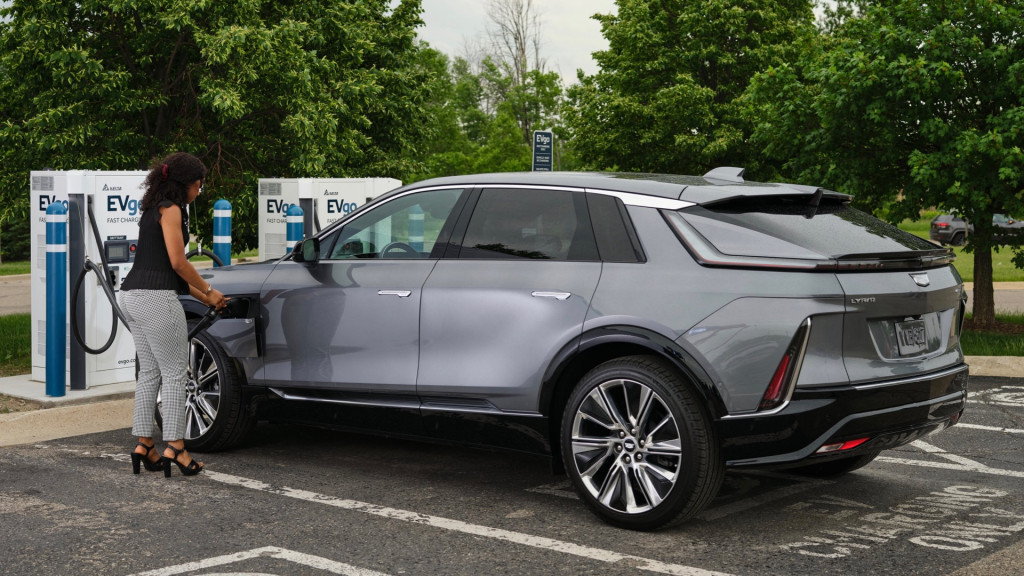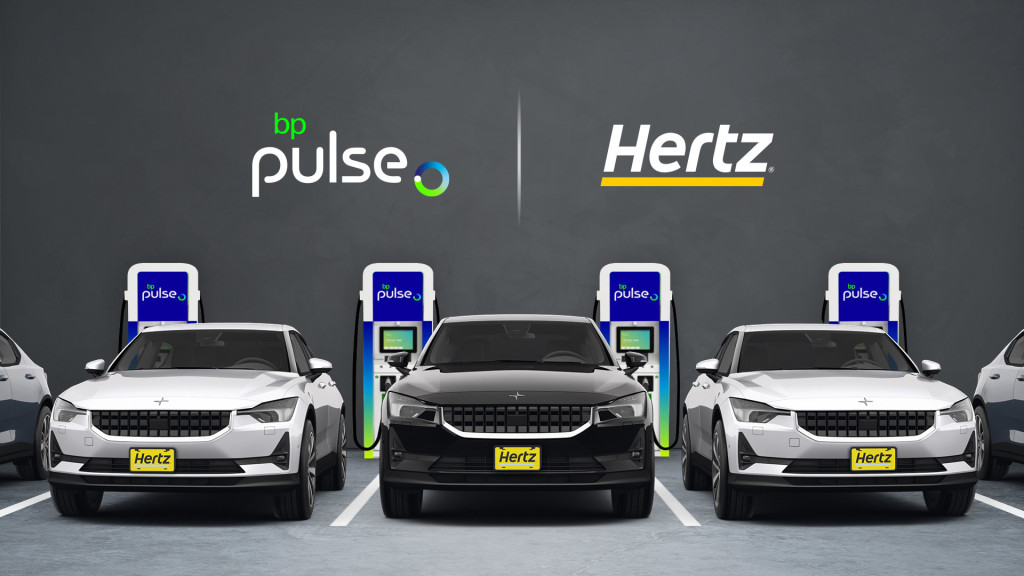Keeping up with anticipated U.S. EV sales growth will require a lot more chargers, according to a new S&P Global Mobility study.
Even accounting for home charging, which is how most EV drivers currently charge most of the time, the U.S. public charging network will need to quadruple in size between 2022 and 2025, and grow more than eightfold by 2030, according to the study.
The study estimates that there are currently about 126,500 Level 2 AC chargers and 20,431 DC fast chargers in the U.S., plus 16,822 Tesla Superchargers and destination chargers specific to that automaker. The number of chargers grew more in 2022 than the preceding three years combined, with the U.S. adding about 54,000 Level 2 chargers and 10,000 DC fast chargers, according to S&P's estimates.

2023 Cadillac Lyriq at EVgo DC fast-charging station.
Yet that growth isn't happening fast enough, the firm's analysts argue. S&P anticipates EV new-vehicle market share will jump from 5.2% in the first 10 months of 2022 to 40% by 2030, with the number of EVs on U.S. roads increasing from 1.9 million today to 7.8 million in 2025 and 28.3 million in 2030. For reference, the study estimates 281 million vehicles of all types operating on U.S. roads today.
Based on those projections, the U.S. will need 700,000 Level 2 chargers and 70,000 DC fast chargers by 2025, 1.2 million Level 2 chargers and 109,000 DC fast chargers by 2027, and 2.1 million Level 2 chargers and 172,000 DC fast chargers by 2030, according to the study.

Hertz and BP Pulse partner for EVs and charging
That's in addition to home chargers, some of which could morph into more powerful DC wallbox units in the coming years, bridging the gap between AC chargers and still faster public DC fast chargers, according to S&P.
Efforts to speed up expansion of the public charging network are already underway. A federal EV charging network of 500,000 chargers is starting to take form, while California has calculated that it needs 1.2 million EV chargers by 2030 to support its emissions-reduction targets. The state's plan to reach that goal will essentially double its charger count by 2026, and that's not including the nationally funded chargers or any private ones.
Outside the U.S., one example of a truly large buildout of Level 2 chargers is what's planned for Seoul—more than 200,000 new chargers by 2026. In multiple cities, the U.S. might benefit from something of that magnitude.












